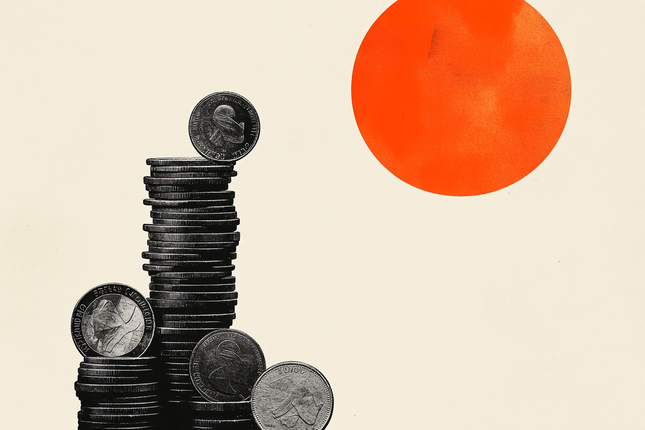In this episode of the Money Metals Midweek Memo, host Mike Maharrey delves into the topic of Franklin D. Roosevelt's gold confiscation during the Great Depression, framed within a broader discussion of government power and individual compliance.
Personal anecdotes and government compliance
Maharrey begins by relating his own childhood obedience to his mother's rules, using this personal anecdote as a metaphor for how people generally comply with government mandates, whether out of respect, fear, or a desire to please. He asserts that, much like his mother's hypothetical threats, the government's power is often more implied than real, due to their limited capacity to enforce laws against a non-compliant populace.
Executive order 6102: Context and purpose
Mike Maharrey discussed Franklin D. Roosevelt's Executive Order 6102, issued on April 5, 1933, which required U.S. citizens to surrender much of their gold holdings to the Federal Reserve. The order was justified as a necessary measure to stabilize the U.S. banking system during the Great Depression, following a severe bank run that prompted Roosevelt to declare a bank holiday.
Key aspects of executive order 6102:
-
Purpose of the order: The executive order was framed as a measure to prevent the hoarding of gold, which was seen as exacerbating the banking crisis by leading to a shortage of gold reserves necessary to back the currency. This was part of a broader strategy to prevent gold from flowing out of the banking system and to enable the Federal Reserve to inflate the money supply.
-
Compensation for Gold: Citizens turning in their gold were not robbed outright; they were compensated with paper currency at the rate of $20.67 per ounce. Maharrey emphasizes that this exchange rate was set by law, suggesting that the transaction was not confiscation in the traditional sense but rather a mandatory buy-back.
-
Legal and social dynamics: The order was legally grounded in the Trading with the Enemy Act of 1917, as amended by the Emergency Banking Act of 1933. Maharrey discusses how Roosevelt’s administration used the language of "hoarding" to morally charge the act of holding gold, painting it as unpatriotic and antisocial during a national crisis.
-
Public compliance and enforcement: Maharrey points out that the effectiveness of the executive order relied heavily on voluntary compliance. He noted that there was no widespread forceful confiscation or aggressive enforcement. Most people who complied did so out of a sense of duty or fear of legal consequences, which included hefty fines or imprisonment.
-
Impact and aftermath: The immediate effect was to increase the gold reserves of the Federal Reserve, allowing for more paper money to be printed. Later, the U.S. moved further away from the gold standard, culminating in significant monetary policy shifts. Maharrey also mentions that the executive order was followed by the Gold Reserve Act of 1934, which adjusted the price of gold from $20.67 per ounce to $35 per ounce and further consolidated gold in federal hands, allowing even more flexibility in monetary expansion.
Maharrey’s discussion of Executive Order 6102 is critical yet nuanced, acknowledging both the context of its implementation and its implications for personal freedoms and government power.
Maharrey explains this order was a means to bolster the federal gold reserves, which would allow the government to increase the money supply, aiming to alleviate the economic strains of the Depression while increasing government spending and centralized power. He challenges the common perception of this move as a wholesale "confiscation," clarifying that most people complied voluntarily and were compensated at the then-standard gold price of $20.67 per ounce.
According to Milton Friedman and Anna Schwartz in their book, A Monetary History of the United States 1867-1960, the amount of gold turned in following Executive Order 6102 was relatively small. Friedman and Schwartz estimate that only about 20 to 25% of the gold held in private hands was actually surrendered to the Federal Reserve. This suggests that the majority of people, approximately 75 to 80%, chose to ignore the order and retained their gold privately.
Furthermore, Maharrey discusses the aftermath and the broader implications of the gold confiscation, including the eventual rise of the dollar value of gold to $35 per ounce in 1934, which effectively increased the gold value on the Federal Reserve’s balance sheet by 69%. This allowed for further expansion of the money supply under the gold standard.
Theoretical underpinnings and modern parallels
Towards the end of the podcast, Maharrey touches on modern parallels, noting how the Federal Reserve and the federal government manipulate the money supply today without the constraints of the gold standard. He concludes by encouraging listeners to consider buying gold and silver as a safeguard against potential economic instability, emphasizing the ongoing relevance of precious metals as "real money."
The importance of sound money
Mike Maharrey touches on the concept of sound money primarily through the historical context of the U.S. gold standard and its implications for today's monetary policy. He discusses how, historically, sound money was represented by currency backed by physical gold, which limited the government's ability to expand the money supply arbitrarily.
Maharrey explains that the gold standard acted as a check on the government's ability to inflate the currency, as the Federal Reserve was required to hold gold reserves equal to at least 40% of the currency it issued. This requirement constrained monetary policy, but it was circumvented by Roosevelt's actions in the 1930s, which shifted gold from private hands to the Federal Reserve, thus allowing for an increase in paper money circulation.
He also reflects on the modern implications of departing from sound money principles, particularly highlighting the Federal Reserve's current ability to expand the money supply without such constraints, leading to significant economic repercussions like inflation.
Maharrey emphasizes the importance of sound money for economic stability and advocates for the ownership of physical gold and silver as a way to retain personal control over part of one’s financial assets in a landscape where government actions can dilute traditional money’s value.
Overall, Maharrey advocates for a return to sound money principles to limit government power over the economy and protect individual financial sovereignty.
Conclusion and call to action
Throughout the episode, Maharrey engages with historical facts, economic theories, and personal insights to argue that government actions often rely heavily on the voluntary compliance of its citizens, and he encourages a more questioning and cautious approach to governmental power and monetary policies.
The episode concludes with Maharrey advocating for the purchase of gold and silver as a hedge against potential economic downturns, suggesting that owning physical precious metals is a prudent way to maintain personal financial security in uncertain economic times.
Money Metals Exchange and its staff do not act as personal investment advisors for any specific individual. Nor do we advocate the purchase or sale of any regulated security listed on any exchange for any specific individual. Readers and customers should be aware that, although our track record is excellent, investment markets have inherent risks and there can be no guarantee of future profits. Likewise, our past performance does not assure the same future. You are responsible for your investment decisions, and they should be made in consultation with your own advisors. By purchasing through Money Metals, you understand our company not responsible for any losses caused by your investment decisions, nor do we have any claim to any market gains you may enjoy. This Website is provided “as is,” and Money Metals disclaims all warranties (express or implied) and any and all responsibility or liability for the accuracy, legality, reliability, or availability of any content on the Website.
Editors’ Picks

EUR/USD Price Annual Forecast: Growth to displace central banks from the limelight in 2026 Premium
What a year! Donald Trump’s return to the United States (US) Presidency was no doubt what led financial markets throughout 2025. His not-always-unexpected or surprising decisions shaped investors’ sentiment, or better said, unprecedented uncertainty.

US Dollar Price Annual Forecast: 2026 set to be a year of transition, not capitulation Premium
The US Dollar (USD) enters the new year at a crossroads. After several years of sustained strength driven by US growth outperformance, aggressive Federal Reserve (Fed) tightening, and recurrent episodes of global risk aversion, the conditions that underpinned broad-based USD appreciation are beginning to erode, but not collapse.

GBP/USD Price Annual Forecast: Will 2026 be another bullish year for Pound Sterling? Premium
Having wrapped up 2025 on a positive note, the Pound Sterling (GBP) eyes another meaningful and upbeat year against the US Dollar (USD) at the start of 2026.

Gold Price Annual Forecast: 2026 could see new record-highs but a 2025-like rally is unlikely Premium
Gold hit multiple new record highs throughout 2025. Trade-war fears, geopolitical instability and monetary easing in major economies were the main drivers behind Gold’s rally.

Top 10 crypto predictions for 2026: Institutional demand and big banks could lift Bitcoin
Bitcoin’s (BTC) adoption story is unraveling and the king crypto could see institutional demand return in 2026. Crypto asset managers like Grayscale are betting on Bitcoin’s rally to a new all-time high next year, and themes like Bitcoin as a reserve asset are emerging.
RECOMMENDED LESSONS
Making money in forex is easy if you know how the bankers trade!
I’m often mystified in my educational forex articles why so many traders struggle to make consistent money out of forex trading. The answer has more to do with what they don’t know than what they do know. After working in investment banks for 20 years many of which were as a Chief trader its second knowledge how to extract cash out of the market.
5 Forex News Events You Need To Know
In the fast moving world of currency markets where huge moves can seemingly come from nowhere, it is extremely important for new traders to learn about the various economic indicators and forex news events and releases that shape the markets. Indeed, quickly getting a handle on which data to look out for, what it means, and how to trade it can see new traders quickly become far more profitable and sets up the road to long term success.
Top 10 Chart Patterns Every Trader Should Know
Chart patterns are one of the most effective trading tools for a trader. They are pure price-action, and form on the basis of underlying buying and selling pressure. Chart patterns have a proven track-record, and traders use them to identify continuation or reversal signals, to open positions and identify price targets.
7 Ways to Avoid Forex Scams
The forex industry is recently seeing more and more scams. Here are 7 ways to avoid losing your money in such scams: Forex scams are becoming frequent. Michael Greenberg reports on luxurious expenses, including a submarine bought from the money taken from forex traders. Here’s another report of a forex fraud. So, how can we avoid falling in such forex scams?
What Are the 10 Fatal Mistakes Traders Make
Trading is exciting. Trading is hard. Trading is extremely hard. Some say that it takes more than 10,000 hours to master. Others believe that trading is the way to quick riches. They might be both wrong. What is important to know that no matter how experienced you are, mistakes will be part of the trading process.
The challenge: Timing the market and trader psychology
Successful trading often comes down to timing – entering and exiting trades at the right moments. Yet timing the market is notoriously difficult, largely because human psychology can derail even the best plans. Two powerful emotions in particular – fear and greed – tend to drive trading decisions off course.


